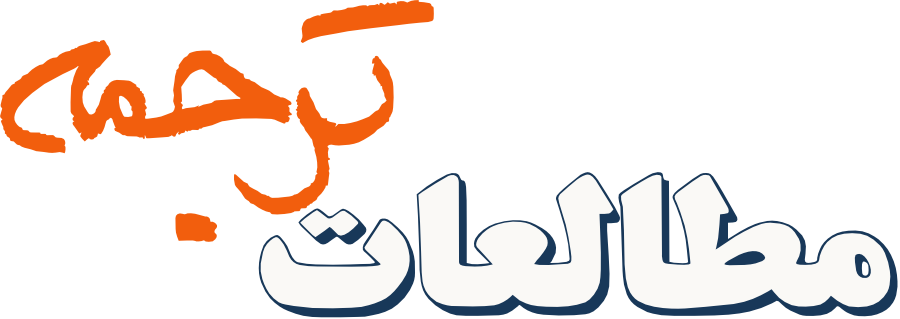مزایا و معایب تربیت برخط مترجم شفاهی پیاپی از دیدگاه دانشجویان
چکیده
همهگیری کووید 19 مطالبات جدیدی را بر نظام آموزشی جهانی تحمیل کرده است و بسیاری از کلاسها در حال حاضر به صورت برخط برگزار میشوند. براساس چارچوب ارزشیابی کِلی (2005)، پژوهش حاضر تلاشی برای بررسی مزایا و معایب تربیت برخط مترجم شفاهی از دیدگاه دانشجویان است. برای انجام این کار، 24 دانشجو که درس برخط ترجمه شفاهی پیاپی را با موفقیت پشت سر گذاشته بودند، پرسشنامه ای را تکمیل کردند که پژوهشگر طراحی کرده بود. پاسخهای آنها به سؤالات پرسشنامه مورد تجزیه و تحلیل قرار گرفت و عبارات و مضامینی از آن استخراج شد. نتایج نشان داد که دو سوم دانشجویان از اجرای برخط دوره عمدتاً به دلیل مشکلات فنی و روانشناختی که دچار شده بودند، ناراضی بودند. با این حال، یک سوم دانشجویان از تربیت برخط مترجم شفاهی از طریق ادوبی کانکت با استناد به چندین مزیت آموزشی، شخصی و روانشناختی که از این دوره کسب کردند، رضایت داشتند. بر اساس تطابق بین مضامین شناسایی شده و مبانی ساخت گرایی، مشخص شد که این دوره برخط با مبانی ساختگرایی شناختی بیش از مبانی ساختگرایی اجتماعی سازگار است. در نهایت، کاربردهای آموزشی یافتهها مورد بحث قرار گرفت.
مراجع
Bahri, H. & Gholami, M. (2012). Handbook of Interpreter Training (HIT). Tehran: Rahnama Press.
Class, B. & Moser-Mercer, B. (2013). Training conference interpreter trainers with technology – a virtual reality. In O. García Becerra, E. M. Pradas Macías & R. Barranco-Droege (Eds.) Quality in Interpreting: Widening the Scope. Vol. 1. Granada: Editorial Comares, 293–313.
Colina, S. (2003). Translation Teaching, from Research to the Classroom: A Handbook for Teachers. Boston: McGraw-Hill.
do Carmo, F., Shterionov, D., Moorkens, J., Wagner, J., Hossari, M., Paquin, E., Schmidtke, D., Groves, D. & Way, A. (2020). A Review of the State-of-the-Art in Automatic Post-editing, Machine Translation. Retrieved from https://doi.org/10.1007/s10590-020-09252-y
Doherty, S. (2016). The Impact of Translation Technologies on the Process and Product of Translation. International Journal of Communication, 10, 947–969.
Dörnyei, Z. & Taguchi, T. (2009). Questionnaires in second language research: Construction, administration, and processing. London: Routledge.
Duff, P. (2008). Case study research in applied linguistics. New York: Taylor & Francis.
González Davies, M. (2004). Multiple Voices in the Translation Classroom. Activities, Tasks and Projects. Amsterdam/Philadelphia: John Benjamins.
Gouadec, D. (2007). Translation as a Profession. Amsterdam/ Philadelphia: John Benjamins.
Hamilton, D. (2005). Illuminative Evaluation. In S. Mathison (Ed.). Encyclopedia of Evaluation. Thousand Oaks, CA: Sage. 192–194.
Hartman, H. J. (2012). Consuming and constructing knowledge through WebQuests. In Increasing Student Engagement and Retention Using Online Learning Activities. Emerald Group Publishing Limited, 6, 255–289.
Ibrahim-González, N. (2011). E-learning in interpreting didactics: Students’ attitudes and learning patterns, and instructor’s challenges. JoSTrans: The Journal of Specialised Translation, 16, 224–241.
Jiménez-Crespo, M. A. (2017). Crowdsourcing and Online Collaborative Translations Expanding the Limits of Translation Studies. Amsterdam/ Philadelphia: John Benjamins.
Kelly, D. (2005). A Handbook for Translator Trainers: A Guide to Reflective Practice. Manchester: St. Jerome.
Kiraly, D. (2000). A Social Constructivist Approach to Translator Education. Empowerment from Theory to Practice. Manchester: St. Jerome.
Klimkowski, K. (2015). Towards a Shared Curriculum in Translator and Interpreter Education. Wrocław/Washington, D.C.: WSF, PAN and International Communicology Institute.
Ko, L. (2008). Teaching interpreting by distance mode: An empirical study. Meta 53(4), 814–840.
Mackey, A. & Gass, S. M. (2016). Second language research: Methodology and design. (2nd Ed.). Routledge: New York and London.
PACTE (2005). Investigating Translation Competence: Conceptual and Methodological Issues. Meta 50(2). 609–619.
Pietrzak, P. & Kornacki, M. (2020). Using CAT Tools in Freelance Translation: Insights from a Case Study. Routledge.
Powell, K. C., & Kalina, C. (2009). Cognitive and social constructivism: Developing tools for an effective classroom. Education, 130(2), 241–250.
Pym, A. (2000). Innovation in translator and interpreter training: Report on an on-line symposium. Across Languages and Cultures, 1(2), 209–273.
Pym, A. (2011). What technology does to translating. Translation & Interpreting, 3(1), 1–9.
Richards, J. C. (2001). Curriculum development in language teaching. Cambridge: CUP.
Saldanha, G. & O’Brien, S. (2014). Research Methodologies in Translation Studies. Abingdon: Routledge.
Sandrelli, A. & de Manuel Jerez, J. (2007). The impact of information and communication technology (ICT) on interpreter training: State-of-the-art and future prospects. The Interpreter and Translator Trainer, 1(2), 269–303.
Stewart, D. (2008). Vocational translation training into a foreign language. Intralinea, 10. Retrieved from https://www.intralinea.org/archive/article/1646
Yin, R. K. (2009). Case study research: Design and methods. (4th ed.). Thousand Oaks, CA: Sage.
Downloads
چاپشده
ارجاع به مقاله
شماره
نوع مقاله
DOR
مجوز
Copyright Licensee: Iranian Journal of Translation Studies. This article is an open access article distributed under the terms and conditions of the Creative Commons Attribution–NonCommercial 4.0 International (CC BY-NC 4.0 license).





